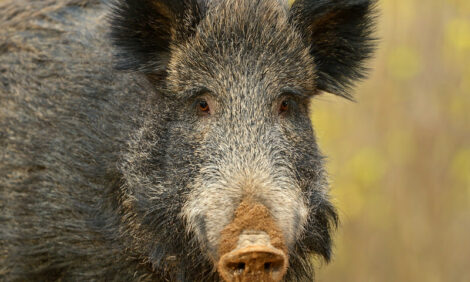



Survey Shows Continued Problems From Soybean Nematodes in Illinois
URBANA - Growers in Illinois suffer more than $250 million in yield losses every year due to soybean cyst nematodes (SCN), according to a recent survey conducted by researchers from the Department of Crop Sciences at the University of Illinois.The survey found SCN present in nearly 85 percent of the fields in the state. Almost half of the fields in Illinois showed levels that exceeded the threshold for measurable economic damage. Primary funding for the survey was provided by the Illinois Soybean Association.
"The survey was conducted at 260 random locations around the state," said Terry Niblack, professor of nematology at the U of I. "The objective was to find out where the nematodes were present and what the population density levels were at those locations. We also wanted to determine whether the populations of SCN could attack the resistant soybean varieties that are widely planted by growers."
She notes that the fields in Illinois showed an average of about 2,700 eggs per cubic centimeters of soil, which is five times the threshold for economic damage from SCN. Nearly 5 percent of the fields had levels that exceeded 10,000 eggs per cubic centimeters of soil. That level of infestation marks the threshold above which no varieties are resistant.
"We also found that about 65 percent of the nematodes in our samples could attack the most common source of resistance found in varieties planted around the state," Niblack said. "Almost 95 percent of the varieties available to farmers use that same source of resistance. The conclusion that we came to was that simply growing any single resistant variety is not enough to control the problem."
She notes that a similar study completed in 1991 showed that only about 30 percent of the nematodes in the samples could attack that same source of resistance. Those results indicate that the SCN populations in Illinois have undergone some major changes in the last 15 years.
One major difficulty in convincing farmers of the extent of the problem is the fact that nematodes often do not produce any visible symptoms. In many cases, growers only move into action when they spot some yellow patches in their fields.
"Many growers in Illinois think they do not have a problem, when they are actually suffering some significant yield losses," Niblack said. "If they are only getting 50 or 60 bushels per acre, they almost certainly should have some major concerns. With today's high-yielding resistant varieties, farmers should be getting 70 to 85 bushels per acre."
She notes that dealing with the presence of SCN requires only a few relatively easy procedures. The first step is to determine the number of nematodes present in a particular field.
"If that number turns out to be several thousand eggs per cubic centimeter of soil, the grower needs to look at the history of the field," Niblack said. "If they have been planting a resistant variety, those results mean that they probably have a population of nematodes in the field that can attack resistance. In that case, simply planting any resistant variety is not going to work."
The best solution would be to rotate varieties with different sources of resistance. For most growers, that is nearly impossible because almost all the common varieties come from the source known as PI 88788.
"At the same time, we know that all varieties with the same of source of resistance are not exactly alike," Niblack said. "The reason is that there are a number of different genes involved in resistance. As a result, each variety has a different level of resistance to the nematodes. By rotating between different varieties using the same source of resistance, growers are still showing the nematodes something new."
Niblack advises growers to check the results available from the Varietal Information Program for Soybeans (VIPS) at www.vipsoybeans.org. The website provides a broad range of information from the soybean variety trials conducted at 12 locations around the state by the U of I, including levels of resistance to SCN and other diseases.
"The website is very easy to use," Niblack said. "Growers should be looking for the highest-yielding varieties with the highest levels of SCN resistance. By planting those varieties, they could increase their profits by an average of $100 per acre. The exact amount of increased profit in any given year will vary somewhat depending on the current price of soybeans."
ThePigSite News Desk








